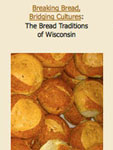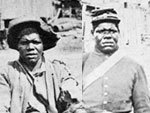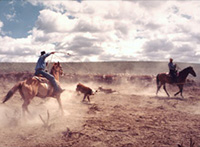The Merchant's House Museum is New York City's only family home preserved intact, both the interior and exterior, from the 19th century. Built in 1832, this red-brick and white-marble late Federal and Greek Revival row house on East Fourth Street was home to a prosperous merchant family for almost 100 years (18351933). The façade, with its steeply pitched roof, dormer windows, marble door surround, and elaborate fan light recalls earlier Federal-style homes; while, inside, the formal Greek Revival parlors reflect the latest architectural fashion of the day. The Merchant's House is considered New York City's prime example of a Greek Revival home. Complete with the family's original furnishings and personal possessions, the house offers a rare and intimate glimpse of domestic life during the pivotal era of the 19th century when New York City was transformed from a colonial seaport into a thriving metropolis and the center of U.S. commerce. Three floors and eight period rooms display the possessions of the inhabitants—including their furnishings, clothing, and personal items. The costume collection includes 420 articles of clothing—primarily women’s dresses and their accompanying accessories, such as petticoats, collars, undersleeves, and chemisettes. The majority of the dresses range from 18401885, with two examples of 1830s dresses and an extremely rare dress ca. 1813-1815 that is in excellent condition, as well as a rare mid19thcentury corset. The 19thcentury rear garden is also open for viewing.
The museum offers self-guided tours, mp3 download or cell phone audio tours, guided house tours on a variety of subjects, guided neighborhood tours, an introductory slide show, docents available to answer questions, an outreach slide show and lecture program, a traditional afternoon tea, period rooms, online exhibits, and the option of friending Gertrude Tredwell (one of the houses residents, 18401933) on My Space or Facebook.


